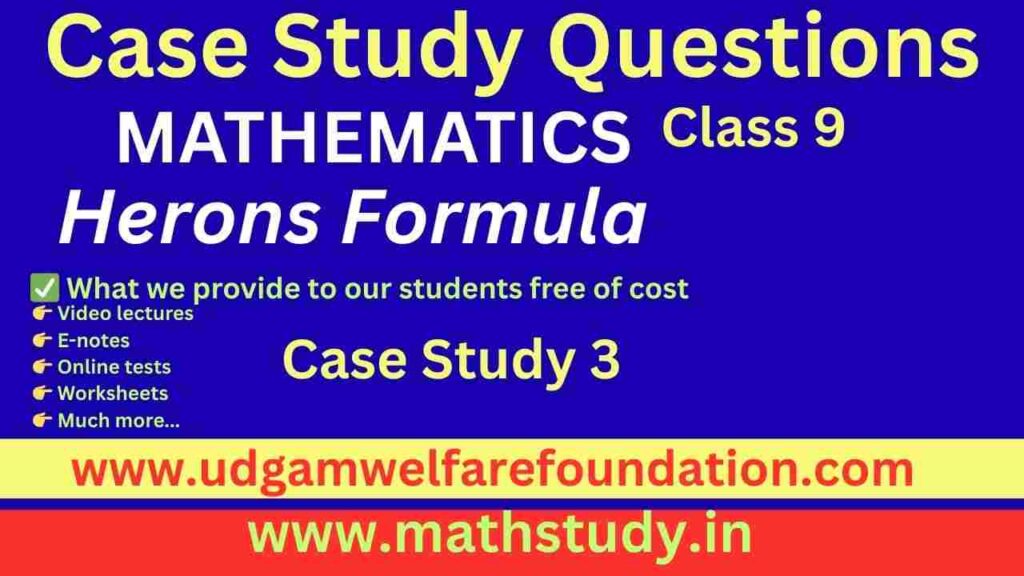Case Study on Herons Formula Class 9
The Case Study on Herons Formula Class 9 is an important part of CBSE exam preparation. Students often practice herons formula case study questions class 9 that focus on real-life applications, such as land measurement or plot design. These practical problems are also available in class 9 maths case study format for easy revision. Moreover, mastering herons formula class 9 builds confidence for solving application-based questions in exams.
Applications and Practice Material
The cbse class 9 case study includes case study questions with step-by-step solutions. Students should also try herons formula extra questions case study for more practice. Furthermore, herons formula case study problems strengthen conceptual understanding. For thorough preparation, many resources provide maths case study questions class 9 and class 9 herons formula examples.
Case Study Questions on Heron’s Formula
These study materials guide learners through herons formula case study questions with clarity. Therefore, regular practice helps improve accuracy, speed, and exam performance.
Case Study on Heron’s Formula class 9 – 1
In a town planning project, engineers are tasked with designing a triangular park. The park has sides of lengths 26 m, 28 m, and 30 m. To determine the amount of grass required to cover the park, they need to calculate its area accurately. The Heron’s formula proves useful in such real-life applications when the measures of all three sides of a triangle are known.
Heron’s Formula: If \(a, b, c\) are the sides of a triangle and \(s\) is the semi-perimeter, then \[s = \frac{a+b+c}{2}, \qquad \text{Area} = \sqrt{s(s-a)(s-b)(s-c)}.\] This formula is particularly useful when the height of the triangle is not known directly.
MCQ Questions
Quiz Results
Correct Answers: 0
Incorrect Answers: 0
Percentage Score: 0%

